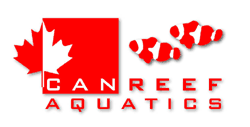
 |
|
|
|
#1
|
|||||
|
|||||
|
abcha0s im not sure if i agree with you on the optics
if you do not use optics, you are restricted to the old way of thinking on mounting a light over your tank. few inches above the water level. If you use optics, you got alot more options to think out of the box. Mounting it up against the ceiling high above your tank for a unique look. I think part of the problem with these pre made fixtures is that everyone is following the old school way of doing lighting. LEDs give you so many new options like spot lighting an area in your tank and having shadows in other areas, using different colors all along your tank, etc etc thanks one of my pep peevs about "kits". you are restricted to what someone says it should be made like. dont think inside the box! |
|
#2
|
|||||
|
|||||
|
Wow, this turned from a tank shot page to a Why LED page quick :P
My 2 cents. Cost isn't going to be huge saving, like people have said and showed, cost of builds and electricity savings are going to eventually pay off the LEDS. But as also stated, people are assuming the LED's and drivers won't malfunction during that time (technically they shouldn't... but...). Same goes with MH too though, as i'm sure anybody using an old humming ballast knows. The HUGE benifit in my opinion is the wave length on LED's... it doesn't change. No color shifting after 6 months like MH(even the best bulb will have some shift.) The output is at least 70% after 5 years of 12 hours a day use. Most people are underdriving their DIY systems, so they can increase to get that 70% back later on. Big setups are usually driven to max, but have sufficient cooling so that it won't matter. People ahave been arguing the PAR rating etc, but PAR is a poor measure of what we need, most meters check all light between 400nm-700nm and give back the average over that amount. What we really need is the used wavelengthss since coral doesn't use an average from 400nm-700nm. PUR is better, but hard to measure. What you CAN see is the output of LED's on a wavelenth compared to what algee needs to grow. This is why i'm going LED's(not cree LED's or a good MH bulb/balast, but you can find wavelengths for both from cree's site and from sanjay's site, just a good general example)  Here's some links on LED's that should relate to this "tank pics": benfits: http://www.nano-reef.com/forums/inde...owtopic=186982 Tank Pics(nano's but shows): http://www.nano-reef.com/forums/inde...owtopic=200335 LED build with par readings(my favorite LED tank so far): http://www.reefcentral.com/forums/sh....php?t=1761942 http://www.reefcentral.com/forums/sh...&postcount=388 (vid's) Here's a pic of that tank(Not Mine, one on RC): 
__________________
My 150 In Wall Build Last edited by Lampshade; 09-06-2011 at 07:17 PM. |
|
#3
|
||||
|
||||
|
Quote:
I don't see many commented this setup. I think the setup looks pretty amazing. How is your tank doing, Lampshade? |